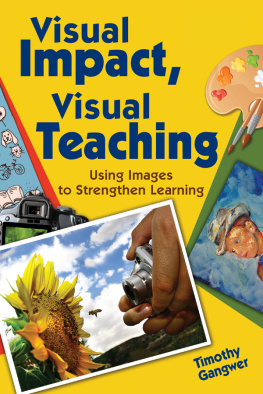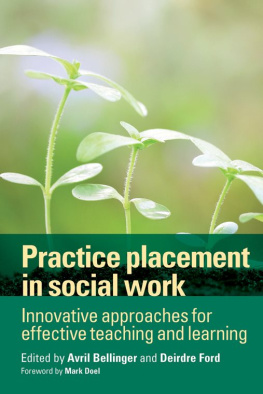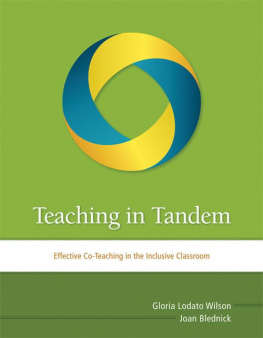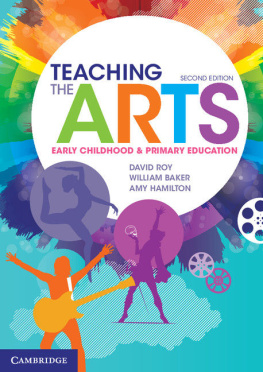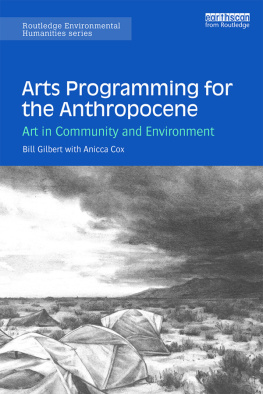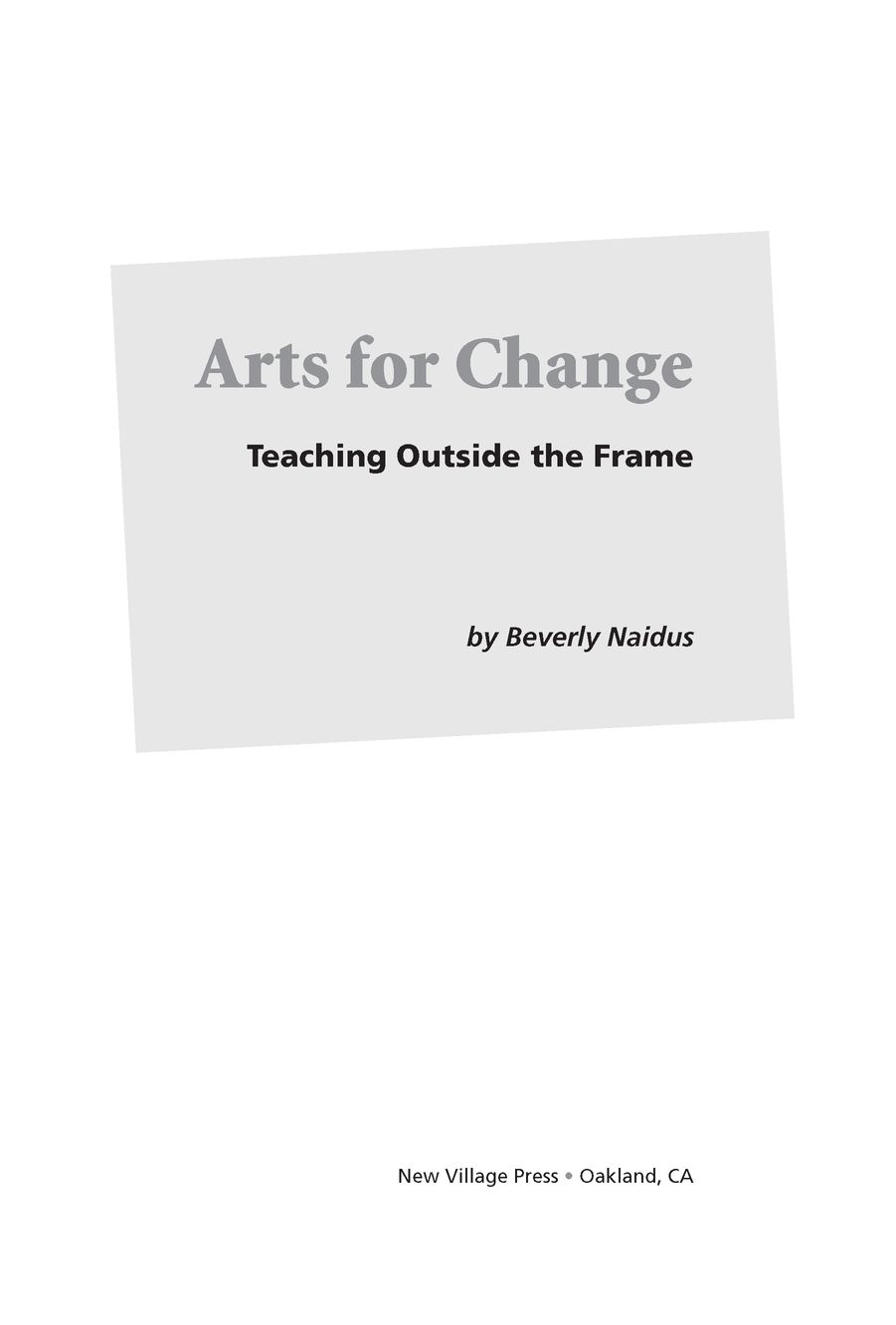Table of Contents
Dedication
This book is dedicated to my ninety-year-young mom, Rhoda Seretean Naidus, who has been a teacher at her core, although she hasnt taught in a formal classroom for many, many decades. She has continually offered me a passion for research and critical thinking, an inexhaustible generosity to share information, a thirst for social justice, and a deep appreciation for cross-cultural communication.
I also dedicate this book to my teachers, especially the ones I never acknowledged and to my many students, who were some of my best teachers.
Acknowledgments
Many thanks to the enthusiastic publishers at New Village Press, Lynne Elizabeth and Karen Stewart, without whom this book may have miscarried, and to all the remarkable and often unsung artist-teachers who gave of their valuable time to participate in this book.
Blessings go to my readers, Charles Frederick, Bob Spivey, Margot Boyer, Barbara Resnick, and Anne Petrocci. Without their efforts this book might have floundered on the shores of endless explanations and redundancies.
Deep gratitude and love goes to my teenage son Sam, for his unexpected but invaluable pep talks. On our precious evening walks in the woods, he shared his passion for alternative rock, hilarious jokes, and his unhidden despair about the future his generation will inherit.
And to Bob, my life partner, for resiliently living through this writing process with a woman consumed by continual deadlines and an often-profound sense of being overwhelmed. For twenty years he has continuously offered his advice, encouragement, and love, and most recently helped to create the space for this book to emerge.
preface
An Anchor
A book written as a montage of ideas, memories, histories, herstories, and fable requires a simple anchor to moor the reader. In these pages you will find multiple ways of thinking about how pedagogy, the arts, and social change intertwine. I have combined personal memoir with theory born organically from experience and readings, and some relevant chapters of social and cultural history.
Reclaiming the idea that art can act as both a deconstructive force (to analyze and question what exists and existed) and as a reconstructive one (providing a visionary role) is a pivotal theme within these pages. I dare the reader, along with my students, to imagine the world we want and to think utopically, about how things ought to or could be, rather than just consider how they are.
As added inspiration for the reader, thirty-three practitioners offer different perspectives from our field, along with curricular and practical information about how to teach art from a socially engaged and interdisciplinary perspective. Sewn into the seams of this book is a fable that emerged quite unexpectedly. May readers take what they need from these words and images as fuel for the journey ahead.
First, Eat a Rose
There once was a sweet ball of a girl, who bounced around the room, rebounding off the walls and floor and ceiling, with questions and delighted squeals. This honey-brown girl radiated a warm light that had so much energy it couldnt be contained; she was glad there was an outside to go to where she could inhale more deeply. There she crawled through thick, neat rows of planted tomatoes, snow peas, and cucumbers; the seemingly uncontrollable tangles of vines reached out to her as she dug her bare heels and toes into the humus. The beauty of the bounty made her want to eat, and so she grazed like any good forager on berries and leaves of mint, and popped roses into her mouth, not knowing they werent food. Beauty asks to be eaten, she thought. Although the words came out more like, Prettymust eat.
Her wanderings took her to magic rocks that provided steppingstones into other worlds. Under almost every one, if she looked carefully, she found elaborate, delicate strangers, busy with the events of their day, and often oblivious to her gaze. Eventually both their predictability (there was always some creature under a rock) and their surprises (theyre not here today; whered they go? Hey, youre new) won her over. Bugs were her friends, and snakes (if she was so lucky), and frogs and toads. Outside was where the friends were always available for tea and conversation. They didnt mind if she stared, and didnt care if her hair was a mess or if she chattered incessantly.
When she couldnt go outdoors, she explored the cozy pleasure of closets, where the hanging clothes embraced her with vast histories she didnt understand. The pungent smells of tangy leather, mothballed wool and freshly washed dresses became a refuge, and nameless mysteries surrounded her there.
As the family moved from town to town, it seemed that each time they arrived at a harsher place. Unfair things, mocking voices, and uncomfortable events began to accumulate, like too many scraped knees and elbows, and they folded her energy in on itself, several times over. The folds contained the shapes of things that she couldnt make sense of, so out of some innate stubbornness, she wandered outside to another, much bigger garden. There were more rocks to lift up, and bugs that were loyal to her and continually full of surprises. Here the trees began to talk. She didnt understand their language completely, but she had so much gratitude that she would share her secrets with special ones, and ask for their forgiveness when she carved bumps off their bark, like a monkey removing fleas from a family member.
One day she began to sing, as a way to push away the small pains and rejoice for the sweet ball of a girl who was still alive (after being folded inside herself many times), and the sound glided with effortless grace from her belly to her tongue, giving back roses to the world. Her voice joined with others in chorus, and she felt herself lifted off the ground, and carried by something bigger than she could imagine, and when she was asked to sing alone, to offer up her unique roses, she felt something powerful tugging inside and the unfolding was exquisite.
At some point her differences, and there were so many, became apparent to others and were named back to her, often harshly, and with hate in peoples voices; some she didnt understand, others she did too well, and she began to sink into the folded place for longer times with sticky things she couldnt pull off; and then suddenly the voice that vibrated with roses was left behind by an embarrassing moment on stage. She was lacking in sufficient poise to turn her gaffe into a joke. But being the trooper that she was, she finished her performance. There was no mentor or coach to erase the chorus of cruel laughter, for such a one did not exist in her life. She was left to imagine herself deeply flawed, and the sweet ball of a girl grew quiet.
Still the swirling, golden, energy creature could come alive unexpectedly through dance, and she would leap and crouch and wiggle, delirious in those moments, before the clumsy lessons of some folded-in teacher made her ache to escape, and similarly she could move into a trance while running her fingers in special, made-up patterns on the keyboard of her dads piano, where he always played the same beloved song, Greensleeves, over and over. Her patterns became ocean waves that had storms and eddies, twisting the girl into a place of such rightness that she had no words for it; that something called her inside and then out again. At the end of the concert she played for herself, she felt open-hearted, just like the bugs who asked for nothing.


